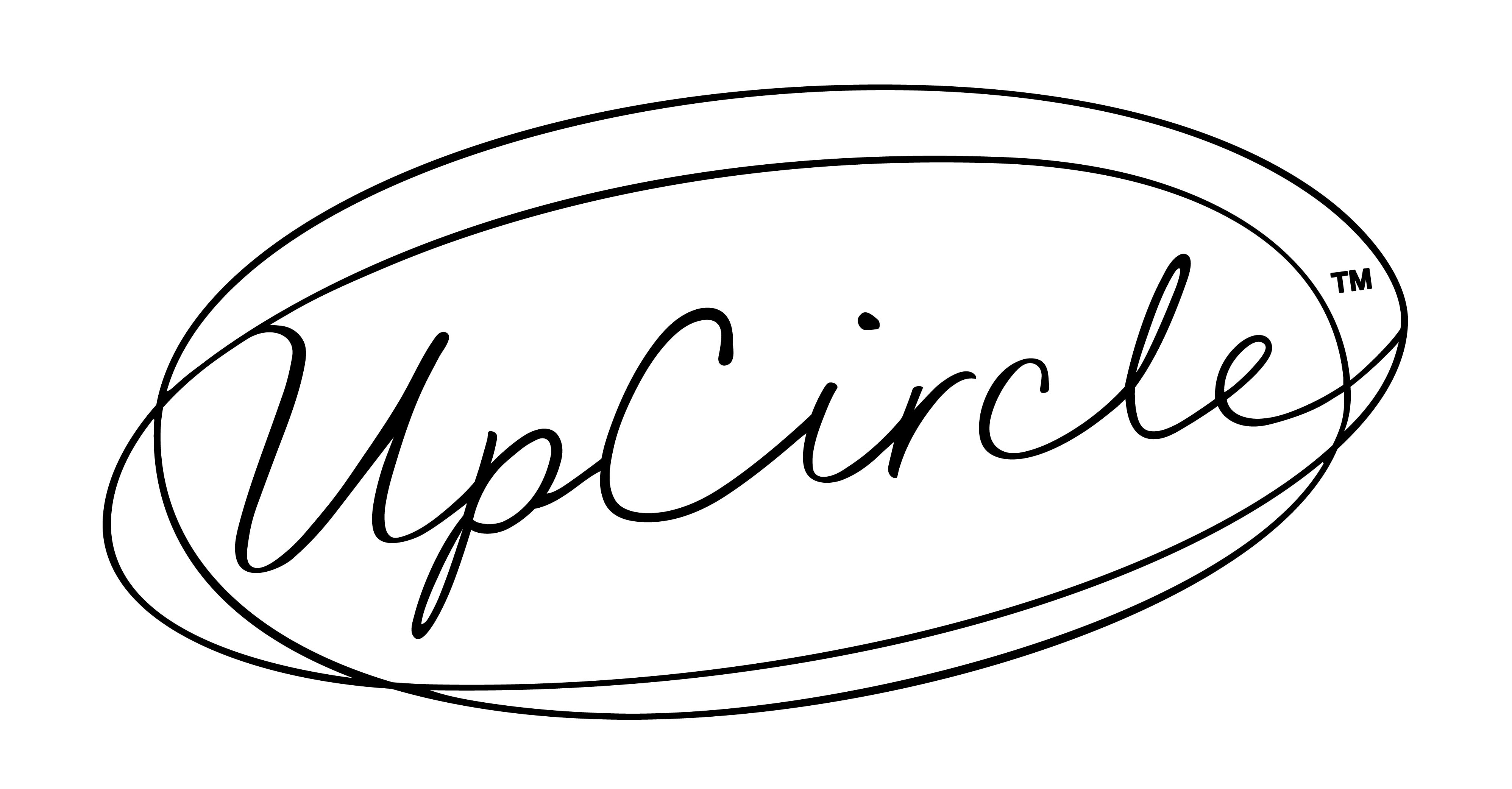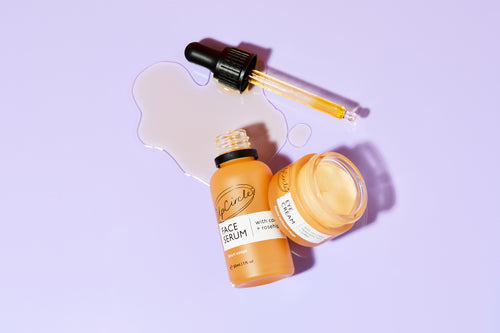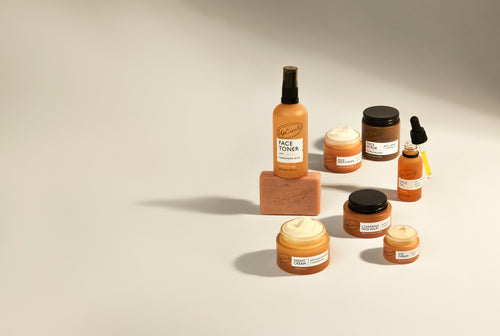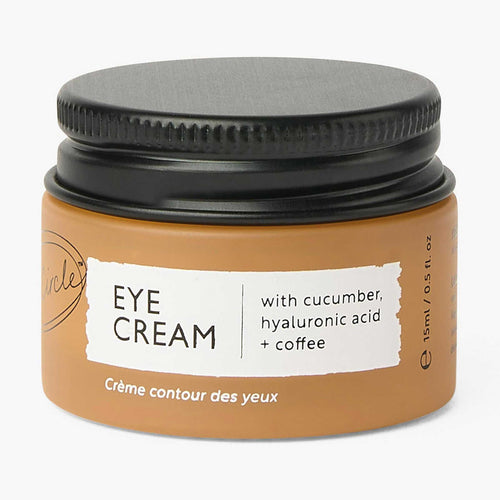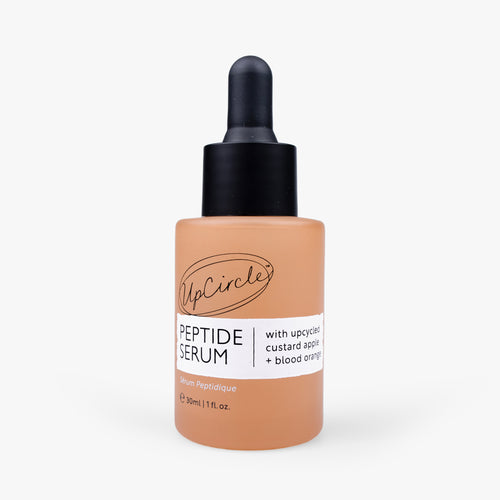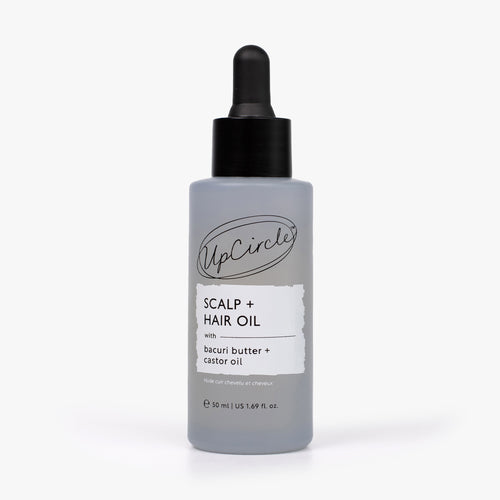With global warming and #zerowaste at the forefront of our minds in 2020, we’re all becoming increasingly aware of the environmental footprint we are leaving. The skincare industry, having avoided scrutiny in the early 2000s, is becoming a focus for consumers demanding more transparency, authenticity and sustainability when it comes to their beauty routine. But where to start?
At UpCircle, we’re restlessly determined to make skincare products that leave the planet better than we found it. We do things differently – and love sharing our ideas for making things better.
So see below for our easy guide for assessing the sustainability of your skincare routine with easy swaps to ensure minimum environmental impact and maximum results!
Chemicals
Your skin is the largest organ of your body and given it’s porous, it can absorb practically everything you put on it. If you wouldn’t put it in your mouth, we caution you from putting it on your skin. The increasing scrutiny around the ingredients we put our skin is a logical follow on from what we are eating.
What’s our general rule of thumb? If you can’t pronounce an ingredient or do not recognise it, best to avoid.
The most commonly found chemicals are:
- Parabens (look for ingredients with the suffix “-paraben”) – usually used as preservatives, these mimic the actions of oestrogen in the body and can disrupt the endocrine (hormone) system.
- Sodium Lauryl Sulfate (surfactant and foaming agent) – often derived from palm oil or petroleum and known as a skin and eye irritant. Depending on the manufacturing process, it may be contaminated with toxic manufacturing impurities such as 1,4-dioxane - a suspected carcinogen which easily penetrates the skin.
- BHA (butylated hydroxyanisole) – typically used as preservatives in moisturisers and lipsticks, this is a synthetic ingredient suspected to be a carcinogen. Harsh on your skin, harsh on marine life.
- Polyethylene/PEGs – often used as microbeads for their exfoliation purposes, which are toxic to marine life.
- Fragrance /Parfum – this “ingredient’ is an undisclosed concoction of scent chemicals – best to simply avoid!
- Oxybenzone (sunscreen) – endocrine disruptor and proven to be a hazard to coral reefs.
- Triclosan (liquid products) and triclocarban (bar soap) – used in antibacterial products, this was found to cause gut inflammation and trigger colon cancer in animals.
Animal Ingredients & Testing
Cruelty-free skincare is guaranteed to not contain ingredients or manufacturing methods that support animal testing. Despite the commonly held belief that animal testing is archaic and outdated, it is not in decline globally and in many countries it is on the rise. Look for brands that are certified cruelty free, including PETA, Leaping Bunny and the Soil Association & COSMOS. Certified products will have been looked at with a fine toothcomb and been deemed squeaky clean - just like you’ll be.
Vegan skincare requires that products do not contain animal derived ingredients or animal by-products. Many natural skincare brands may still use ingredients that are animal derived. Look for ingredients such as honey, beeswax, gelatin, lanolin and stearic acid, which are commonly found in skincare and cosmetics. Familiarizing yourself with PETA’s Animal Ingredient List is helpful in identifying animal derived ingredients on packaging.
Many assume that if a product is vegan it has not been tested on animals. However, this is often not the case. To ensure this isn’t the case look for the leaping bunny logo or other cruelty free certifications. With people becoming increasingly socially aware and health conscious, the sun is only just rising on a natural, cruelty-free world. Flower power indeed.
Palm oil and derivatives

We are increasingly aware of the humanitarian and environmental devastation that is occurring in South East Asia as a result of the worlds insatiable demand for palm oil. Deforestation and displacement of people and wildlife combined with child labour are some of the effects of the palm oil industry. Consumers are increasingly looking to avoid products that contain palm oil or ‘vegetable oils’, which are usually derived from palm oil.
Palm oil and its derivatives are currently in over 70% of all cosmetics products, where they serve as emulsifiers and surfactants. Given the generic term ‘vegetable oil’ and the numerous palm oil derivatives, it is often difficult to identify whether a product contains palm oil. At UpCircle we’re proud to have palmed off the palm, keeping it out of our range of sustainable goodies from the start. We’re also trying to spread the word about palm and the damage it leaves behind.
So, if it contains the word ‘Palm’, best to avoid it. Look for words such as: octyl palmitate, palmytil alcohol, palm kernel, Palm kernel oil, Palm fruit oil, Palm stearine.

UpCircle Soap Bar Trio - 100% palm oil-free of course!!
Another key term to watch for is ‘emulsifier’. The following are all palm oil derived emulsifiers and commonly used in organic skincare: cetearyl olivate, sorbitan olivate, sorbitan stearate, cetearyl glucoside, ceteareth-20, cetearyl alcohol, glyceryl stearate and glyceryl oleate.
Waste in the beauty industry
70% of the waste from the beauty industry is from packaging. The cosmetics industry relies heavily on rigid single use plastics to house its products. Refillable containers or sustainable packaging alternatives are key to stemming waste in the industry. Supporting brands that are innovating with respect to packaging is key to initiating change.
At UpCircle the packaging across our range is 99% plastic free - and we offer plastic free refills for the 1%! (See below!!)
Sustainability in the beauty industry is still in its infancy. At UpCircle our focus in on creating pioneering skincare that’s regenerative by design. We elevate leftover natural ingredients, bringing them back to life as beauty products your skin will love.
We are a vegan and cruelty-free brand that has sustainability at the heart of everything we do – our range includes palm-oil free Soap Bars made with repurposed chai tea spices, exfoliating Body and Face Scrubs made from repurposed coffee grounds and a nourishing face range - the fruit stone range - made from, you guessed it, discarded fruit stones!
DIY Floral Body Oil - Make Your Own!
With Valentine’s Day fast approaching, keep any flowers, especially any roses for making a floral body oil. Rose has astringent properties and is perfect for cooling inflamed skin.
Ingredients
- Kilner jar or glass bottle
- Carrier oil (we like almond and jojoba)
- Rose Petals (leftover from flowers)
- Optional – essential oil such as ylang ylang, jasmine, other dried or fresh flowers or herbs (e.g. chamomile, lavender, mint)
Directions:
- Fill half of the kilner jar with rose petals and then cover with the carrier oil. If using, add essential oils in the combination and strength you prefer. Leave on a windowsill to infuse. We suggest a minimum of 3 days.
- If you live in a hot country you could take the process a step further and make a solar-infused floral oil. The heat and energy from the sun speeds up the process of infusion and also helps extract some plant benefits due to the heat.
- Leave the kilner jar in the sun outside or on a sunny window ledge. We suggest a minimum 3 days, the longer you leave it the stronger infusions properties and scent.
And, a cheeky heads up, something verrrrrry similar to the recipe above is very much on our radar for our upcoming 2020 product releases. So keep your eyes peeled!!
Thanks for reading!
